Results 11 to 13 of 13
Thread: Reground blades
-
10-27-2010, 09:39 PM #11

I think Hollows have been around as long as the wheel(grinding wheel). For as long as there have been straight razors during industrial times, there had to have been hollows. Heavy, slightly hollowed, none the less hollow to some degree.
Some of these heavier grinds may turn into true wedges over time, and then they need to be reground for ease of sharpening.
How many true wedges came that way from the cutler have to be rare indeed. We know they exist because they are referenced in older books, but Glenn has uncovered a major point as to their scarcity.
-
11-10-2010, 06:01 PM #12Senior Member

- Join Date
- Jun 2010
- Posts
- 279
Thanked: 70
Hate to drag up an oldish thread, but wanted to post this for posterity.
When you know a razor was not produced after a certain date, say 1830, but a thin, hollow ground, large jimp blade shows up with double shoulders, it's reground.
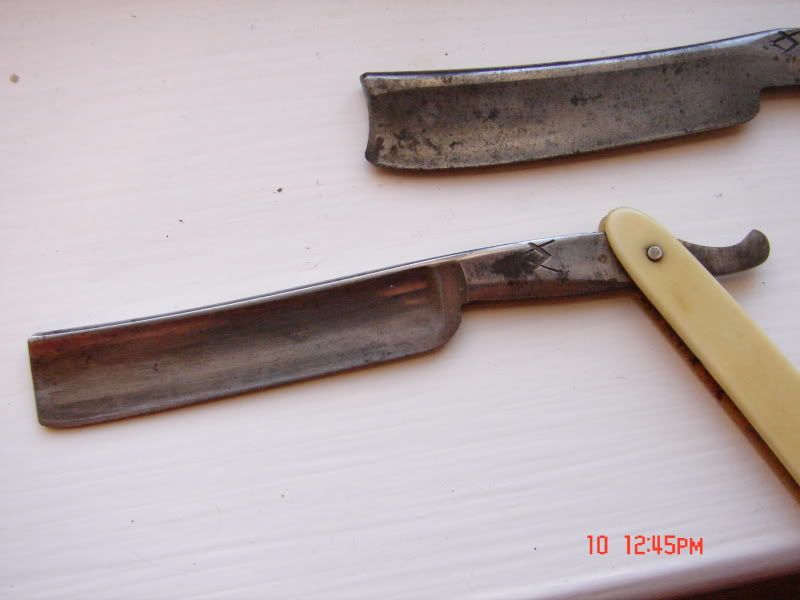
The new blade shape fits completely into the old.
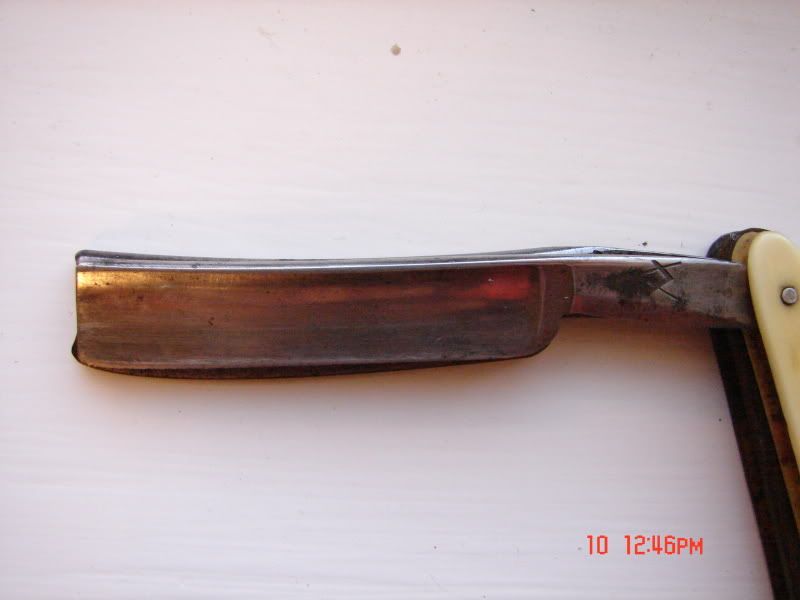
Hollow grind vs. wedge. You can see the original wedge has plenty of steel to allow the spine to shrink.
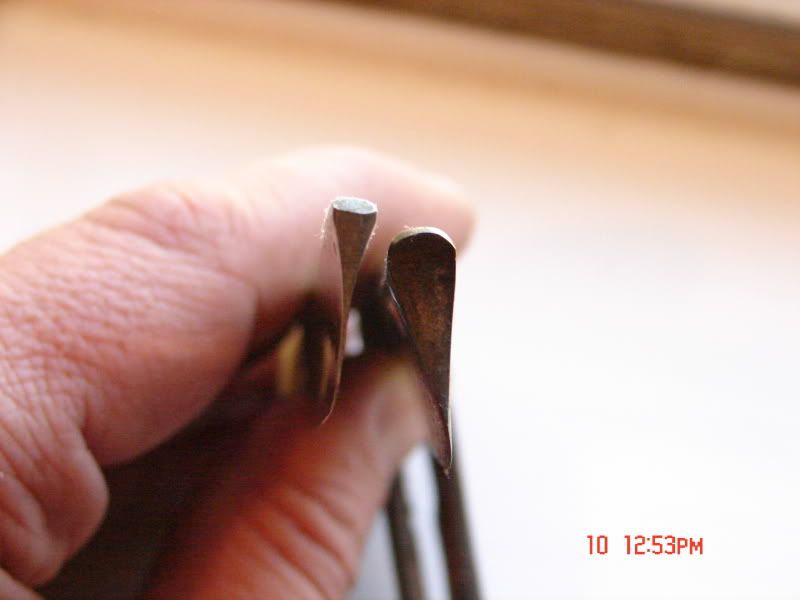
Identical logos. The regrind probably had John Barber written across the edge of the spine.
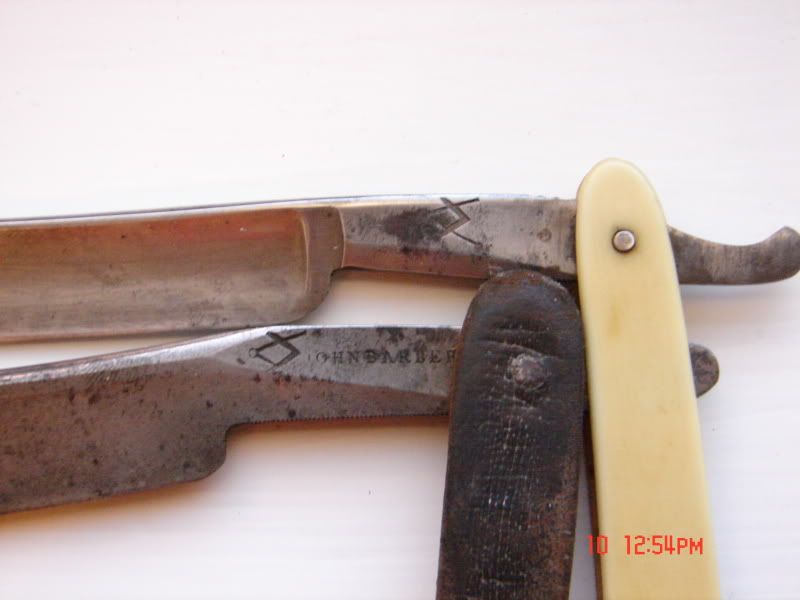
Hopefully, you can see how much steel was lost along the length of the razor. It really is thinner.
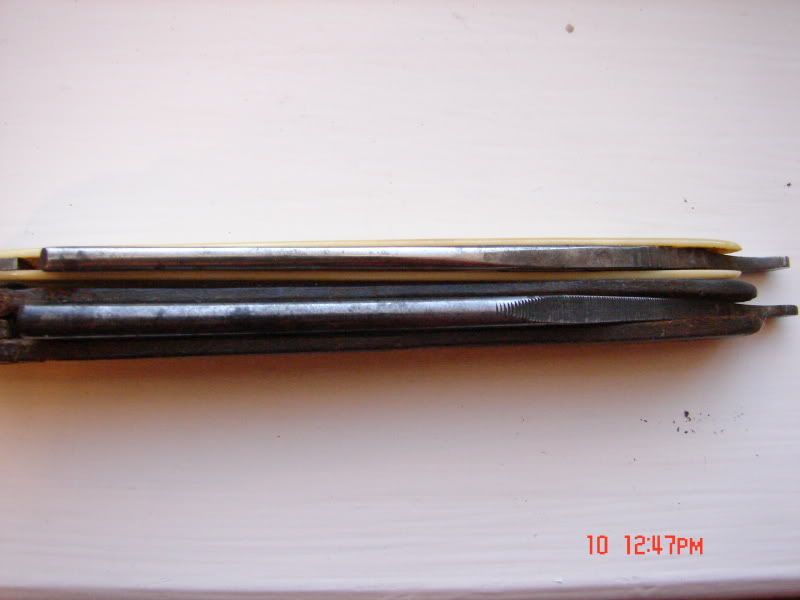
Useful? I doubt it, but I wanted to post it anyway. Maybe it'll help someone.
-
11-10-2010, 07:54 PM #13

I agree, large hollowing can be done with primitive technology as long as the grinder is sufficiently skilled - just look at the profiles butch harner has made.
It appears to have become fashionable towards the late 1800s and of course there were new machines to make it require less skill than using just a simple wheel, and thus cheaper to produce.
On some razors you can tell just based on the line flow since a regrind rarely can completely eradicate the original master grind. Like the ivory barber in the post above.


 LinkBack URL
LinkBack URL About LinkBacks
About LinkBacks






 Reply With Quote
Reply With Quote
